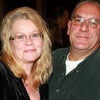The Mark Twain House and Museum was the home of Samuel Langhorne Clemens (a.k.a. Mark Twain) from 1874 to 1891 in Hartford, Connecticut, USA. Before 1874, Clemens lived in many places, most notably Hannibal, Missouri where he spent his childhood, which he immortalized in his writing. The architectural style of the 19-room house is Victorian Gothic. The house is also notable for the major works written during his residency, including The Gilded Age, The Adventures of Tom Sawyer, The Prince and the Pauper, Life on the Mississippi, Adventures of Huckleberry Finn, A Tramp Abroad, and A Connecticut Yankee in King Arthur's Court.
Poor financial investments caused the Clemens family to move to Europe in 1891. The Panic of 1893 further threatened their financial stability, and during 1895-1896, Clemens, his wife, Olivia, and their middle daughter, Clara, spent a year traveling so Clemens could lecture and earn the money to pay off their debts. The trip was recounted in Following the Equator, published in 1897. Before they could be reunited with their other two daughters, Susy and Jean, who had stayed behind, Susy died in the home on August 18, 1896 of spinal meningitis. The family could not bring themselves to reside in the home after this tragedy and spent most of their remaining years living abroad. They sold the home in 1903.
The home in Hartford later functioned as a school, an apartment building, and a library. In 1962 the building was declared a National Historic Landmark. Since 1974 it has had a multi-million dollar renovation and an expansion dedicated to showcasing his life and work. The house faced financial troubles in 2008 due to construction over-runs with their new museum center. Since that time, the museum has rebounded to record-setting attendance and numbers of programs.
Mark Twain first came to Hartford in 1868 on business, while writing The Innocents Abroad, to work with publisher Elisha Bliss, Jr. of the American Publishing Company. At the time, Hartford was a publishing center with twelve publishers. After marrying Olivia Langdon, Twain moved into a substantial home in Buffalo, New York. However, within two years, Twain considered moving to a more opulent house in Hartford. He soon purchased the property in north Hartford, partly to be closer to his publisher, American Publishing Company. Of Hartford, Twain said, "Of all the beautiful towns it has been my fortune to see, this is the chief... You do not know what beauty is if you have not been here." He was attracted to the town which, at the time, had the highest per-capital income of any city in the United States.
The family rented a house at what was called Nook Farm in 1871 before buying land there and building a new house. They moved into the home in 1874 after its completion. The top floor was the billiards room and his private study, where Twain would write late at night; the room was strictly off limits to all but the cleaning staff. It was also used for entertaining male guests with cigars and liquor. Twain had said "There ought to be a room in this house to swear in. It's dangerous to have to repress an emotion like that."
The children had their own area, with a nursery and a playroom/classroom. Mrs. Clemens tutored her daughters in the large school room on the second floor. Clemens played with his children in the conservatory, pretending to be an elephant in an imaginary safari. Twain noted the house "was of us, and we were in its confidence and lived in its grace and in the peace of its benediction."
Clemens enjoyed living in the house, partly because he knew many different authors from his Hartford neighborhood, such as Harriet Beecher Stowe who lived next door and Isabella Beecher Hooker. Also, he would stop in to visit his friend, actor William Gillette at Gillette Castle (today Gillette Castle State Park).
In this home, Clemens worked on many of his most notable books, including The Adventures of Tom Sawyer (1876) and Life on the Mississippi (1883). The success of The Adventures of Tom Sawyer inspired Clemens to renovate the home. In 1881, he had Louis Comfort Tiffany supervise the interior decoration of the house. Twain was also fascinated with new technologies, leading to the installation of an early telephone in the entrance hall.
Clemens's invested heavily in the typesetting machine invented by James W. Paige. He also formed the firm Charles L. Webster & Company, which published Twain's writings along with Ulysses S. Grant's memoirs. Its first publication was Adventures of Huckleberry Finn in 1884. The company went bankrupt in 1894, leaving Twain with a large amount of debt. Paige's typesetting machine never functioned properly and was overpowered by competition from the linotype machine developed by Whitlaw Reid. After the losses from these investments as well as several bank panics, the Clemens family moved to Europe in 1891 where the cost of living was more affordable. Clemens began lecturing across the continent to recoup some money for their family.
The house was designed by Edward Tuckerman Potter, an architect from New York City. When the house was being built, the Hartford Daily Times noted, "The novelty displayed in the architecture of the building, the oddity of its internal arrangement and the fame of its owner will all conspire to make it a house of note for a long time to come." The cost of the house was paid out of Mrs. Clemens' inheritance.
The home is in the style of Victorian Gothic Revival architecture, including the typical steeply-pitched roof and an asymmetrical bay window layout. Legend says the home was designed to look like a riverboat.
In 1881, an adjoining strip of land was purchased, the grounds re-landscaped, and the home was renovated . The driveway was redrawn, the kitchen rebuilt and its size doubled, and the front hall was enlarged. The family also installed new plumbing and heating and a burglar alarm. After its renovations, the total cost of the home amounted to $70,000, $22,000 were spent on furnishings, and the initial purchase of land cost $31,000.
The process of paying off the mortgage, raising money to restore the deteriorating property, and retrieving artifacts, furnishings, and personal possessions took many decades and ended in 1974, just in time for the 100th anniversary of the house. The house earned the David E. Finley Award in 1977 for "exemplary restoration" from the National Trust for Historic Preservation. In 2012, National Geographic named the Twain House one of the Top Ten Historic Homes in the World
Restoration and preservation at the Mark Twain House helped bring the house and grounds back to the years between 1881 and 1891, when the Clemenses most loved the house. The marble floor in the front hallway underwent a historic restoration, and specialists re-stenciled and painted the walls and ceilings and refinishing the woodwork to recover the Tiffany-decorated interiors. Restoration was funded in part by two federal Save America’s Treasures grants totaling $3 million. Scanning computers were also used in the restoration. The home today contains 50,000 artifacts: manuscripts, historic photographs, family furnishings, and Tiffany glass. Many of the original furnishings, including Clemens's ornate Venetian bed, an intricately carved mantel from a Scottish castle, and a billiard table, remain at the house.
With the number of admissions leveling off around 53,000, the house's trustees decided that they must expand or be forced to shrink their operations. They commissioned Robert A. M. Stern, the founder of the Manhattan architectural firm that bears his name and the dean of the Yale School of Architecture, to design a visitor's center that would not draw attention away from the house.
The Education and Visitors Center was built adjacent to the Carriage House where the Clemens family's coachman once lived with his family. The green museum was the first in America to receive a Leadership in Energy and Environmental Design (LEED) certification. The center is a $16.3 million, Шаблон:Convert facility that houses artifacts from the museum's collection that are not shown in the house itself. It contains a lecture hall and classroom facilities. The house received $1 million from the state government to meet expenses related to the construction of the museum and restoration of the house. Since the museum opened in November 2003, attendance has increased by 15%.
The house generates $5 million in tourism from 50,000 visitors. The Aetna foundation gave $500,000 to the campaign. The National Endowment for the Humanities gave $800,000 in challenge grants for teacher development programs, a student writing contest, and an educational website.
in 2011, staff writer Steve Courtney published a book detailing the house's history and renovations. It includes a foreword by Hal Holbrook, a trustee of the house.
After the building of the Visitors Center in 2003, the house became financially unsustainable and launched a campaign to raise awareness and funds. In response, the state government, the governor, United Technologies, and many others contributed. In 2011, the museum's financial controller Donna Gregor admitted embezzling $1 million from 2002 to 2010 and was sentenced to three and a half years in prison. As of 2011, officials of the museum said that it had recovered financially.





